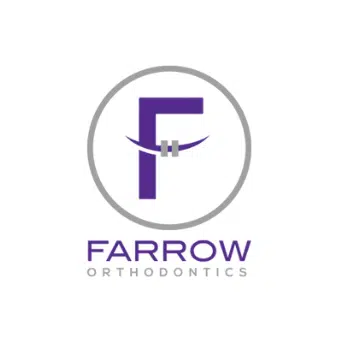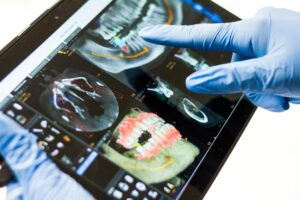AI in orthodontics is transforming the way treatments are planned and monitored. Traditional braces and clear aligners often require months or even years to achieve the desired results. The length of treatment depends on factors like tooth movement, compliance, and regular orthodontic adjustments. With AI-driven tools, orthodontists can now predict, track, and adjust treatments with more precision.
Faster treatment times are a priority for both patients and orthodontists. The introduction of AI has opened doors to more efficient treatment planning and monitoring. But how much of a difference can it really make?
How AI Is Changing Orthodontic Treatment
Automated Treatment Planning
AI-powered software helps orthodontists analyze digital scans with greater accuracy. By studying tooth alignment, bite patterns, and jaw structure, these systems can generate treatment plans faster than traditional methods. This means fewer manual adjustments, reducing delays in the initial stages of treatment.
AI also helps simulate tooth movement, allowing orthodontists to fine-tune the process. Instead of relying solely on standard predictions, AI-driven planning offers a more data-driven approach that can lead to quicker results.
Smart Aligner and Braces Adjustments
One of the biggest factors in treatment time is how often adjustments are needed. AI in orthodontics improves this by analyzing patient progress and making recommendations for modifications.
- Clear aligner systems: AI evaluates how well aligners are shifting teeth and suggests if a new set should be introduced sooner.
- Braces adjustments: AI-based monitoring can detect inefficient movements and recommend changes to avoid delays.
With AI’s ability to track subtle changes in tooth movement, orthodontists can make more precise adjustments, leading to a smoother and potentially shorter treatment process.
Enhanced 3D Imaging and Simulations
AI-driven imaging allows orthodontists to create detailed 3D models of a patient’s teeth. These simulations help predict how teeth will move over time, ensuring that aligners or braces are designed for the most effective movement.
- Faster processing of digital impressions means quicker turnaround for aligner production.
- AI-powered simulations help orthodontists refine treatment strategies before braces or aligners are even placed.
By integrating AI into diagnostics and planning, orthodontists can reduce delays and improve the efficiency of treatment from start to finish.
Can AI Actually Reduce Treatment Time?
How AI Optimizes Orthodontic Efficiency
AI in orthodontics is improving efficiency by refining how treatments are planned and adjusted. Traditional orthodontic methods rely on manual assessments and periodic checkups to monitor progress. AI-driven tools, however, use real-time data to identify inefficiencies that could slow down treatment.
- AI analyzes past treatment cases to suggest the most effective approaches for each patient.
- It detects potential delays in tooth movement and recommends adjustments sooner.
- Orthodontists can use AI insights to refine treatment plans with greater accuracy.
By reducing human error and optimizing treatment adjustments, AI has the potential to shorten the time patients spend wearing braces or aligners.
AI-Powered Monitoring for Fewer Office Visits
Frequent in-person visits are often necessary to ensure braces and aligners are working as expected. AI in orthodontics is changing this by enabling remote monitoring. AI-driven apps and software can analyze progress from home, reducing the need for unnecessary appointments.
- AI-powered remote monitoring: Patients upload images of their teeth, and AI detects alignment progress.
- Immediate feedback: If adjustments are needed, orthodontists receive alerts without waiting for a scheduled visit.
- Fewer unnecessary in-office checkups: Patients only come in when a modification is required.
This approach helps orthodontists intervene sooner if progress slows down. It also benefits patients by cutting down on trips to the office, making treatment more convenient.
Examples of AI-Driven Orthodontic Systems
Several orthodontic companies are already using AI to improve treatment times. These systems analyze patient data, predict outcomes, and assist orthodontists in making informed decisions.
- DentalMonitoring: Uses AI to track clear aligner progress remotely.
- Invisalign SmartTrack: AI-enhanced materials help teeth shift more efficiently.
- OrthoAI: Automates treatment planning to reduce manual workload for orthodontists.
Early research suggests that AI-assisted orthodontic treatments may reduce overall treatment time by improving precision and minimizing delays. While human expertise remains essential, AI is proving to be a valuable tool in achieving faster and more predictable results.
Potential Challenges and Limitations
Reliability of AI Predictions
AI in orthodontics is improving treatment accuracy, but it still has limitations. While AI can analyze patterns and predict tooth movement, biological factors like bone density and tissue response vary from person to person. These variables can sometimes affect the effectiveness of AI-generated treatment plans.
- AI relies on historical data, which may not always align with an individual’s unique dental structure.
- Unexpected factors, such as changes in a patient’s oral habits, can impact results.
- Orthodontists must still assess AI recommendations and adjust plans as needed.
AI can improve efficiency, but it cannot fully replace professional judgment.
Patient Compliance Still Matters
Faster treatment is only possible if patients follow their orthodontist’s recommendations. AI may optimize aligner schedules or suggest adjustments for braces, but it cannot ensure that patients wear aligners for the required hours or maintain good oral hygiene.
- Aligners: AI may determine the ideal schedule, but if patients don’t wear them as directed, progress slows down.
- Braces: If patients miss appointments or don’t follow care instructions, even the best AI-driven treatment plan won’t work efficiently.
- Oral habits: Factors like diet and teeth grinding can also impact treatment speed, regardless of AI predictions.
Orthodontic treatments still require patient cooperation for the best results. AI can enhance the process, but it cannot make up for inconsistent care.
Orthodontists’ Role in Overseeing AI Recommendations
AI is a tool, not a replacement for orthodontists. While AI in orthodontics can analyze progress and suggest modifications, orthodontists are responsible for confirming those adjustments.
- AI can help detect issues early, but orthodontists must ensure that adjustments are safe and effective.
- Some cases require hands-on expertise that AI cannot replicate.
- Human oversight is essential to avoid errors that automated systems may overlook.
The use of AI in orthodontics is expanding, but treatment decisions still require professional experience. Orthodontists play a crucial role in ensuring that AI-driven recommendations align with a patient’s specific needs.
The Future of AI in Orthodontics
Advancements on the Horizon
AI in orthodontics is evolving rapidly, with new technologies emerging to improve efficiency and patient outcomes. Research and development are focused on making AI-driven treatments more precise, accessible, and faster. Some of the innovations expected in the near future include:
- Fully automated treatment planning – AI software will become even more advanced in designing personalized orthodontic plans with minimal manual input.
- Real-time AI adjustments – Sensors in braces and aligners could communicate directly with orthodontists, alerting them to necessary modifications.
- Integration with robotics – AI-assisted robotic systems may help in placing braces or making precise orthodontic adjustments.
- More efficient clear aligner production – AI-powered 3D printing advancements could lead to faster production of customized aligners.
As AI technology improves, treatment processes will become more efficient, reducing wait times and improving overall patient experiences.
What This Means for Patients
The role of AI in orthodontics goes beyond treatment speed—it also has the potential to improve accessibility and affordability. AI-driven systems can streamline processes, reducing the number of in-office visits and optimizing resources for orthodontists.
- Faster results: AI’s ability to predict and monitor tooth movement means patients could see results in shorter timeframes.
- More personalized care: AI-powered tools help orthodontists create treatment plans based on a patient’s specific dental structure.
- Potential cost savings: With fewer office visits and streamlined workflows, treatment costs could decrease in the future.
While AI is not a replacement for expert care, its continued advancements will enhance the orthodontic experience, making treatments more efficient and effective for patients worldwide.
Conclusion
AI in orthodontics is transforming the way braces and aligners are planned, monitored, and adjusted. With AI-driven treatment planning, remote monitoring, and predictive analytics, orthodontists can create more precise treatment plans and reduce inefficiencies. These advancements have the potential to shorten treatment time, making orthodontic care more efficient for both patients and providers.
However, AI is not a standalone solution. Orthodontists still play a crucial role in overseeing treatment and making necessary adjustments based on each patient’s unique dental needs. Patient compliance also remains a key factor in achieving faster results, as even the most advanced AI cannot compensate for improper aligner use or missed orthodontic visits.
The future of AI in orthodontics looks promising, with ongoing advancements expected to refine treatment approaches and improve accessibility. While AI continues to enhance orthodontic care, professional expertise and patient commitment remain essential in achieving the best outcomes.
Take the Next Step Toward a More Confident Smile
AI is shaping the future of orthodontics, making treatments more efficient and precise. At Farrow Orthodontics, we combine advanced technology with expert care to provide customized treatment plans that work for your unique needs. Whether you’re considering Invisalign, metal braces, or clear braces, our team ensures a comfortable and effective experience.
Dr. Anthony Farrow and his team are committed to providing top-quality orthodontic care in a welcoming environment. With a focus on patient satisfaction and the latest advancements, we make achieving a healthier smile easier and more accessible.
Get started today with a consultation at Farrow Orthodontics. Contact us to explore your options and take the first step toward a smile that makes you feel your best.



